Who is developing standards for surf pools? That’s right, “Safety Nerds”
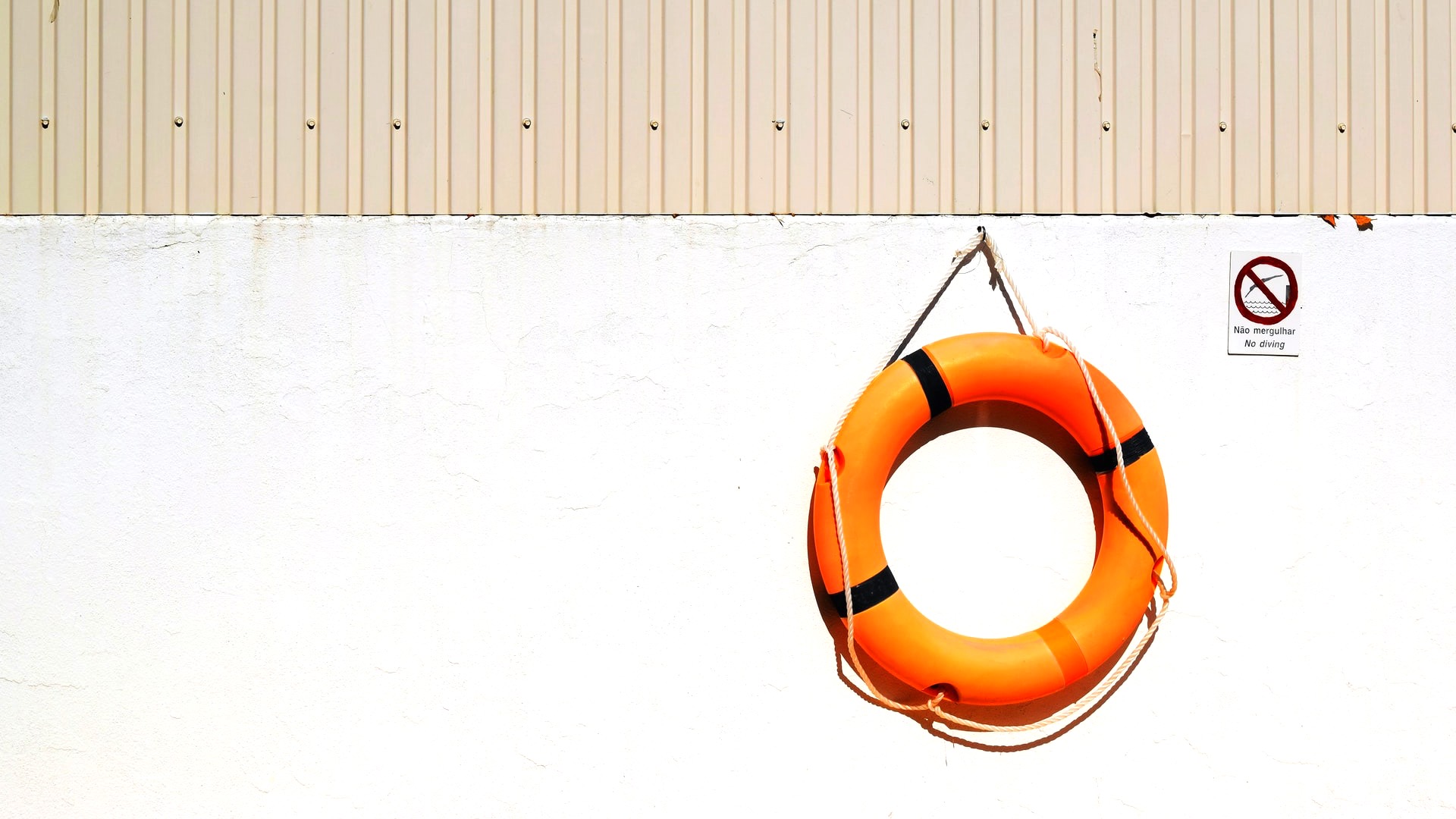
The safety protocols for monitoring wave pools are rather complicated. Surf Lakes and the Palm Springs Surf Club demo pool are two different beasts. One is expansive and open while the other is small and boxed in. Safety guidelines aren’t a one-size-fits-all endeavor. The expanse of Surf Lakes requires more lifeguards while in Palm Springs, the main danger comes from the high velocity in such a small area (it’s basically a concrete box.) But how do you evenly set standards for surf parks? You don’t.
Fortunately, there is work being done in this space by a group of safety nerds from within the wave pool technology companies.
ASTM International (formerly The American Society for Testing and Materials) formed in 1898 because train rails were breaking and crashing trains and killing people. Never a good thing. The group started setting safety standards for simple things like metal density and today the group covers everything from spa safety cover materials to formulating a standard practice for the incredibly specific: “collection of non-fibrous nanoparticles using a nanoparticle respiratory deposition (NRD) sampler.”
Standards are developed within committees (volunteers from within the represented industry) and new committees are formed as needed when a new technology emerges, like wave pools. Before you say that self-regulation leads to lax standards, remember that any wave pool mishap hurts the entire industry, not just the makers of that one system.
To explore this bridge between wave pools and measures within ASTM, we consulted Marshall Myrman. Marsh is a La Jolla local who worked for Tom Lochtefeld running the FlowRider sheet wave business and now heads FlowRider as a division of WhiteWater. To draw an inside bead on ASTM we asked Marsh how the safety standards are set in the ever-evolving world of wave pools.
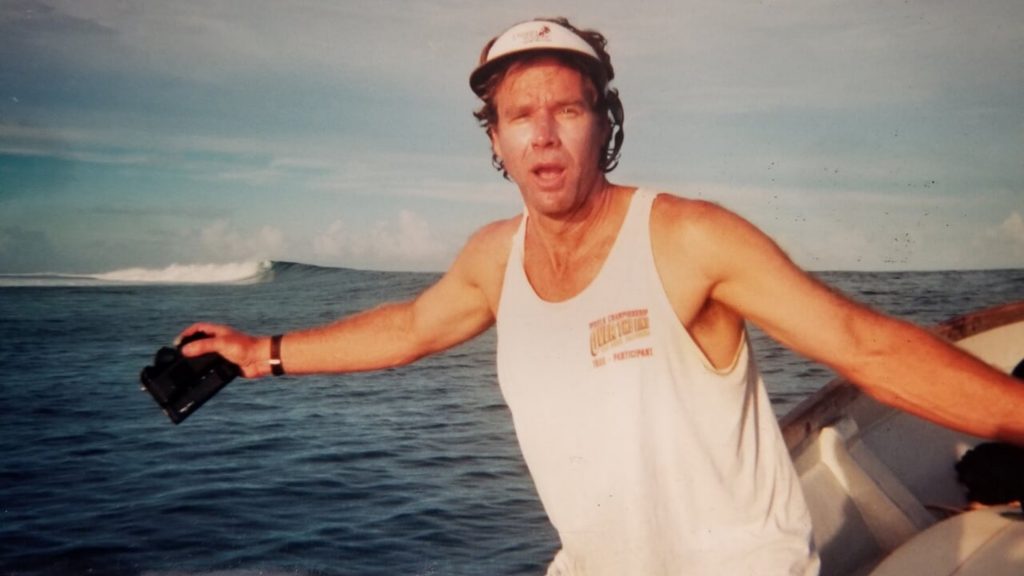
What made you put on the crossing guard outfit and take up safety for surfing attractions?
I’ve been involved in plant safety for decades. When I was at a sporting equipment company, I was an officer in the business and running all the manufacturing supply chain and logistics and they had a huge workers comp issue. And so I convinced them to create a safety incentive plan. Everybody was against it, but it works when you create peer pressure to work safely. It really puts you to the moral test because you just want to make sure that it’s, like, full disclosure that every single risk has been communicated. And so it’s been a very, very interesting road. When you’re surfing, when you fall, usually the water’s there to break your fall unless you’re getting jackhammered into the reef or the lip is like 10-feet thick and it hits you in the back. But not on a FlowRider.
So your background in surfing and safety started with FlowRider?
Tom Lochtefeld urged me to get involved in ASTM. We have a pretty good standard that’s in place for stationary wave systems. And I think we should work on developing one for surf pools (or whatever you want to call them, “surf venues.”). And honestly, the very first thing we need to think about is the safety of everybody entering the venue – the “patrons” in ASTM vernacular. There are big differences between a stationary wave system and a surf pool. You know like, how many people do you want riding at the same time? On a stationary wave, you don’t want to have three people riding in a public setting because the collision aspect is greater. Concerning “surf pools” you also want to drive awareness of collisions and other issues that might have some element of risk. It is about risk elimination.
Is this ASTM’s first venture into boardsports? Can someone contribute money and get their product “ASTM Certified?”
There’s a section of ASTM (F27) that is all about board sports. I’m a regular member of the standards meetings which cover snowboard, wakeboard, water ski, and other products. ASTM does not “certify” products. It is an organization that creates standards, so no amount of money will get you “ASTM certified.” There are product safety approval organizations like TUV, UL, CE, etc and they can be per region for a manufacturer to meet and then there are organizations that create standards – some regional (USA, China, Europe, etc) and some are global like ASTM. ASTM is different – you have to live up to the ASTM category. It doesn’t approve your product. It creates the standards for safe work, for safe products.
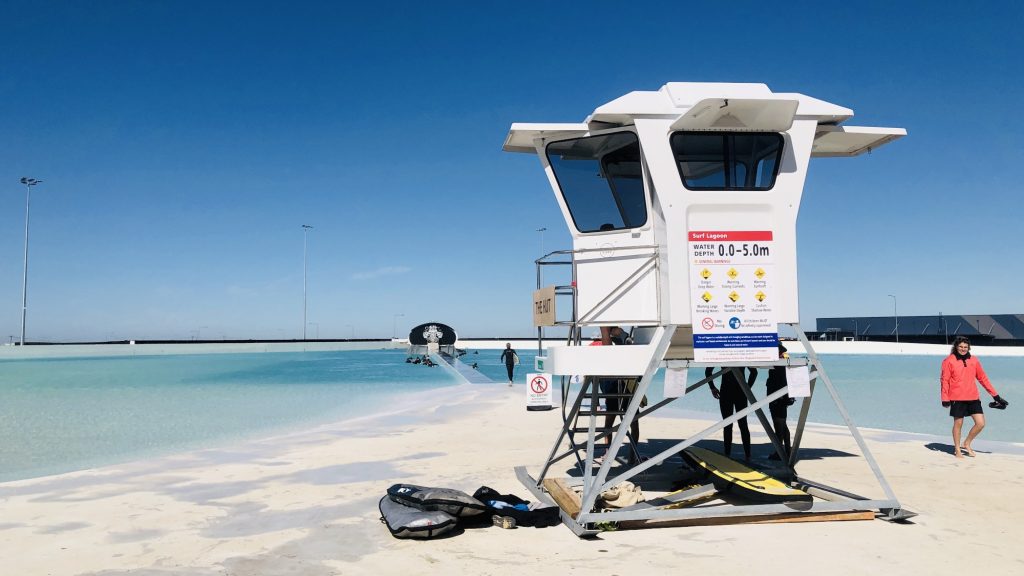
How does this apply to wave pools?
Well, what happens when somebody decides that because they want to make more money? They start firing off waves every six seconds, and all of a sudden you have a yard sale (scattered people and boards) on the inside and people just run each other over, you know. I mean, are there protective devices at wave pools that have equipment running through them? Is there a way to prevent anybody from getting caught up in the wave generating device that moves through the water?
What’s to say that something moving in the water is 100 percent safe? I know they thought about it. I’m sure they have preventions, but that’s what the standards are for. But, it is the responsibility of the “designer/engineer” to make certain that all of the design and operational bases for safe use have been covered. It’s to make sure that we, as manufacturers, recognize a hazard, like what’s the ratio of lifeguards to participants? And the above is just a very small example.
So you have the sheet wave standards developed for the Stationary Wave System Industry and now you’re working on traveling, or moving waves, correct?
Yes, that’s correct. And the scope is, we don’t know yet because we haven’t defined it, but there is a push amongst the manufacturers. And I think everybody sees and recognizes the need for standards. So at this time generally we will try and steer clear of water quality specifications and leave that to the aquatic health codes. There are different water quality health codes in different cities, states, countries.
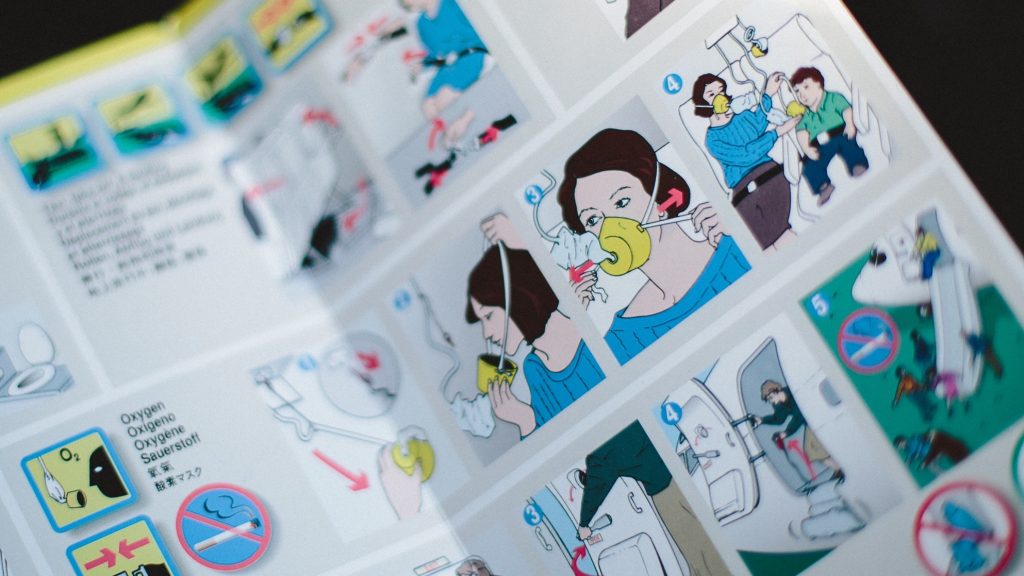
Who is ultimately responsible to communicate this safety to the user?
The onus is always on the “designer engineer” in the documentation. If you took a look at our operations and procedure manual it’s got to be 50, 60 pages for our equipment. And so, the operations for these surf pools have to be super comprehensive. They need to cover everything we’re talking about and more. They need to cover the training and specify to the owner that for any new user, they need to watch a video or sit down and be taught the rules of the road for their own safety, or whatever it is that the “designer/engineer” decides.
So how do you handle a novice who ventures in over their ability level?
We run into this on our machines all the time. But in a surf pool environment, let’s have proper training protocols like they have in a skydiving simulator. As a novice, you’re in the tunnel with an expert trainer and the nuances are so insane, like, you just move your thumbs a little bit and you turn your whole body. They know that if somebody gets out of control in a tunnel, they could go headlong into a wall at a fairly high rate of speed. The whole thing to me is to create a safe environment, especially for new riders, is to have some kind of training program for novices.
With surfing, isn’t the most dangerous thing other surfers – like when paddling out in the wrong part of the pool?
You know what? It’s like when you’re on the inside and someone is barreling down the line and you want to paddle for the shoulder? But if you do you might put that surfer’s life at risk. So what do you do? You sit or you paddle toward the whitewater and you take it on the head, right? Well, that has to be explained to the novice. The surfer needs to understand that the way to get out of the way is not the intuitive action of paddling for the shoulder. They need to understand that the way not to get run over or to injure the rider coming is to paddle to the impact zone. I mean, there’s rules of the road that need to be explained, because they are not always intuitive. And so I think the number one aspect of wave pool safety is training.
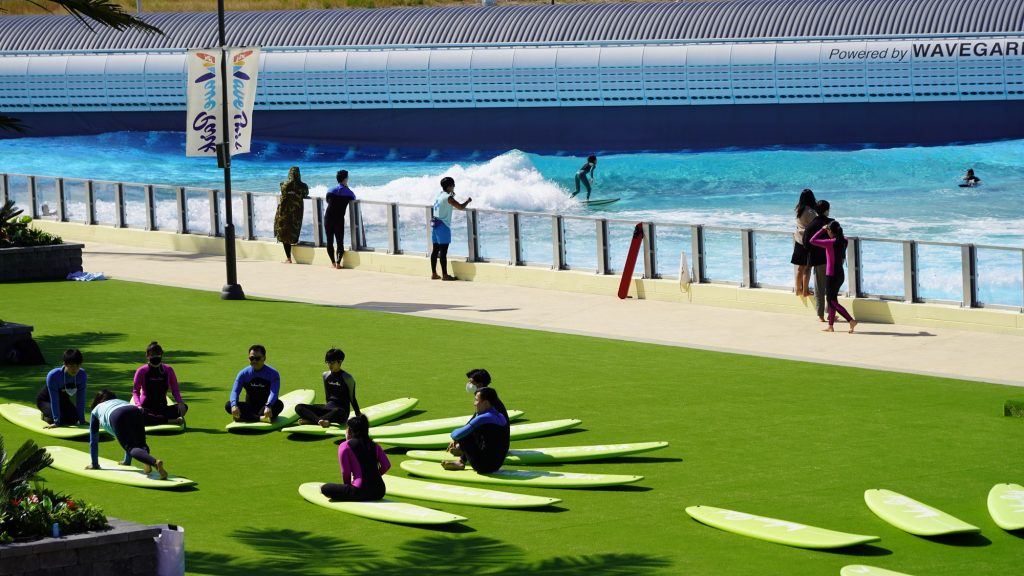
Would ASTM have a minimum mandatory training for novices before they enter the pool?
There might be recommendations in the appendix, but they’ll put the onus on the owner-operator to adhere to the manufacturer’s (designer/engineer) specifications. It’s really on the manufacturer to come up with the specifications. The designer engineer is the key person, but they have to make sure that they’re designing something that is safe and that they’re also creating instructions and training that are appropriate for their technology.
What are some other safety concerns?
Well, training covers a fairly large gamut. But I’d say neck and head injuries and then drowning. I mean, you’ve got a body of water. There has to be a super stringent protocol in place amongst the lifeguards. So drowning is a major concern and I think right after that, for me, would be collisions. Because like I said, if you jack up the wave frequency, you’re going to have more people in the impact zone bobbing around. And if they aren’t trained, they’re going to be in the way and get all smashed up.
What about a foil wave or plunger that runs with less frequency?
Well, that’s the other thing, any wave that has a moving device in the water, the designer engineer has to specifically design safety routes, routes for traffic. There has to be a traffic pattern. Plus a required distance to make sure nobody ever comes in contact with a plunger or with a plow or whatever it is.
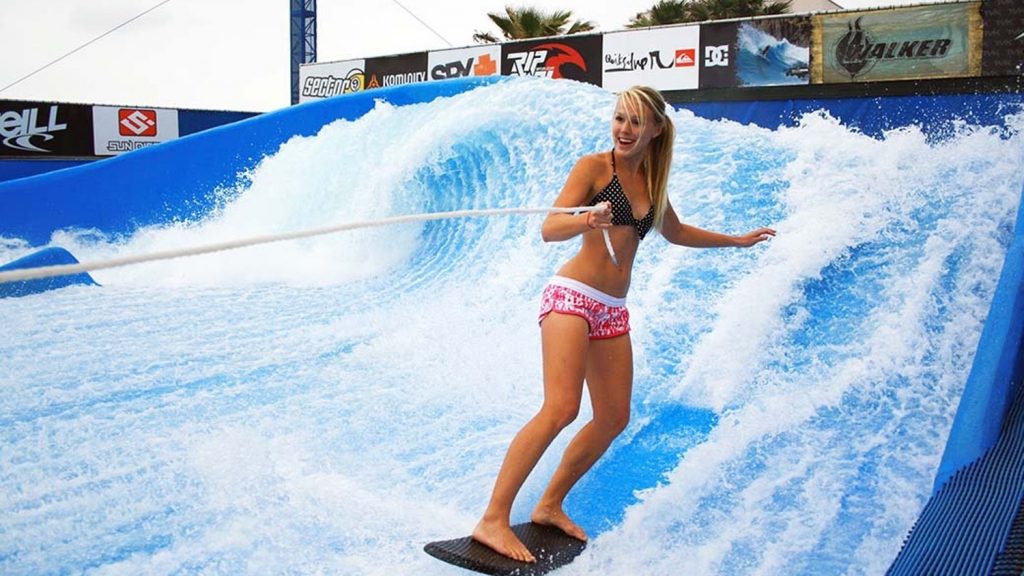
ASTM sets standards through committees. Who is on the wave pool committee and how is cooperation?
There had to be 40 people on our last Zoom call. I don’t know why it was so popular, maybe because surf pool is the new buzz word, and with the Covid-19 environment, it was a must-see committee! I can tell you that in our stationary wave system group we’re lucky to have, like, 12 to 15 people consistently in a meeting – but they are dedicated. But for the surf pools, there was a huge group on the call and I’d say there were probably 20+ people from within the surf park industry and 20 who are just interested observers.
Take us inside one of those meetings. Do things move along smoothly?
Somebody said, well, we’re making Surf Lagoons, and then somebody else said, well, we’re making Surf Lakes. And I said “look, guys, you don’t argue over what the title is, you know?” I mean, let’s call it a Surf Body of Water. This can be the problem when you get a bunch of people in a room. It’s like herding cats, and this is why it’s so hard to create a standard because you’re getting people from within the industry and it becomes a bit of a turf war. But everyone ends up cooperating toward the same end. Everyone must work for the good of the organization and for the safety of the patron. Everybody’s looking at the creation of these standards with one goal, and that’s to make it a safer environment. Another reason why ASTM is so great, by the way, is because everybody that’s involved is volunteering. And everybody that’s volunteering has a passion for their business and the industry.
Main article image of life ring by Matthew Waring
Related Coverage
